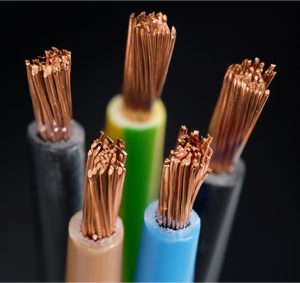'Electrical wiring' for homes is the use of insulated conductors and associated devices to carry electricity to different parts of your house so as to operate devices that work on electricity.
Materials for wiring interior electrical systems in buildings vary depending on:
- Intended use and amount of power demand on the circuit
- Type of occupancy and size of the building
- National and local regulations
- Environment in which the wiring must operate.
In order to install any electrical wire installation, the proper wire size for the application is needed. But how do you know what size wire to use? The installation of conductors will depend on a few factors like- the gauge of the wire, wire capacity, and what the wire will feed.
The larger the wire gauge, the larger the amperage that the wire can handle. Wire amperage is the safe amount of current that a wire can handle without getting hot or causing a fire. The following examples of devices in your home, the amperage that they are rated for, and the wire gauge, will help you determine the right size wire for the appropriate application.
There are several steps you can take now to minimize the energy used by the electric devices in your home:
Unplug It.
The simplest and most obvious way to eliminate power losses is to unplug products when not in use. Search the wall sockets in your house for hidden un-connected chargers and other devices that don't need to be plugged in. When you detach your cell phone or similar device from its charger, unplug the charger too.
Use a Power Strip.
Plug home electronics and office equipment into a single power strip with an on/off switch. This will allow you to turn off all power to the devices in one easy step. But remember to keep your power strip in an easy-to-reach location! Once the power strip is turned off, no power will be delivered to the outlets, thereby eliminating power wasted by power supplies.
Use a Power Meter.
Use a power meter to find your leading sources of energy consumption to help you to prioritize which products to unplug or to replace. Plug these devices in between a given appliance and the wall socket to see how much electricity it is using.






1.Unplugging the chargers from socket when it is off is not understanding. why it should be taken out from the socket?
ReplyDelete2.The idea of power meter usage for identifying faulty equipment is good.
@Sajeev- Many chargers have step-down transformers in them to reduce the voltage to suit the device to be charged. A step down transformer is a closed circuit that works on the principle of induction. Hence, they consume minute amounts of electricity even if it is not connected to the device. Hence, it is advisable to remove it from the socket so as to conserve power.
ReplyDeleteHow To Play Baccarat: 7 Easy Steps (and Tips) - FEBCASINO
ReplyDeleteHow to play Baccarat? — How to Play Baccarat is one of septcasino the most exciting and rewarding ways to win money online. 바카라사이트 The 메리트카지노 casino offers several methods, such as